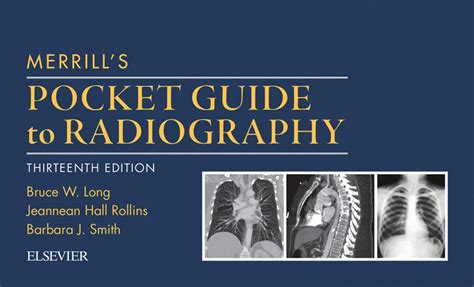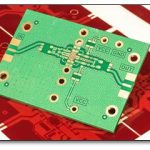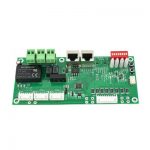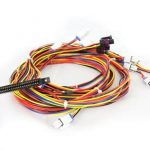What is X-ray Inspection?
X-ray inspection is a process that utilizes X-rays to create images of an object’s interior. X-rays are a form of electromagnetic radiation with wavelengths shorter than visible light. When X-rays pass through an object, they are absorbed or scattered depending on the object’s density and composition. The resulting image, called a radiograph, shows the internal structure of the object, revealing any defects, voids, or inconsistencies.
How X-rays Work
X-rays are generated by an X-ray tube, which consists of a cathode and an anode enclosed in a vacuum. The cathode emits electrons that are accelerated towards the anode by a high voltage. When the electrons strike the anode, they produce X-rays. The X-rays then pass through the object being inspected and are captured by a detector on the other side.
Applications of X-ray Inspection
X-ray inspection is used in various industries for a wide range of applications, including:
Manufacturing
In manufacturing, X-ray inspection is used for quality control and failure analysis. It can detect defects such as:
- Porosity
- Inclusions
- Cracks
- Voids
- Assembly errors
X-ray inspection is commonly used in the automotive, aerospace, and electronics industries.
Medical
In the medical field, X-ray imaging is used for diagnostic purposes. Some common medical X-ray applications include:
- Bone fractures
- Dental examinations
- Chest X-rays for lung conditions
- Mammography for breast cancer screening
Security
X-ray inspection is also used in security applications, such as:
- Baggage screening at airports
- Cargo inspection at ports and border crossings
- Mail screening for suspicious packages
X-ray Inspection Techniques
There are several X-ray inspection techniques, each with its own advantages and limitations.
Radiography
Radiography is the most basic form of X-ray inspection. It involves placing the object between an X-ray source and a detector, such as a film or digital sensor. The resulting image shows the internal structure of the object in two dimensions.
Computed Tomography (CT)
Computed tomography (CT) is an advanced X-ray technique that creates three-dimensional images of an object. In CT, the object is rotated while multiple X-ray projections are taken from different angles. These projections are then processed by a computer to create a 3D reconstruction of the object.
Real-Time Radiography (RTR)
Real-time radiography (RTR) is a technique that allows for the continuous monitoring of an object during the inspection process. RTR uses a fluorescent screen or digital detector to display the X-ray image in real-time, enabling the operator to observe changes in the object’s internal structure.

Advantages of X-ray Inspection
X-ray inspection offers several advantages over other NDT methods:
-
Non-destructive: X-ray inspection does not damage the object being inspected, making it suitable for testing finished products or components in use.
-
Penetration: X-rays can penetrate deep into materials, allowing for the inspection of thick or dense objects.
-
Versatility: X-ray inspection can be used on a wide range of materials, including metals, plastics, ceramics, and composites.
-
High resolution: X-ray images can reveal small defects and features that may be difficult to detect with other methods.
Limitations of X-ray Inspection
Despite its many advantages, X-ray inspection also has some limitations:
-
Safety concerns: X-rays are a form of ionizing radiation and can be harmful to humans if not properly controlled. Operators must follow strict safety protocols and use appropriate shielding.
-
Cost: X-ray inspection equipment can be expensive, especially for advanced techniques like CT.
-
Orientation dependence: The orientation of a defect relative to the X-ray beam can affect its detectability. Some defects may be hidden by other features in the object.
-
Material limitations: Some materials, such as those with low atomic numbers or similar densities, may be difficult to distinguish using X-rays.
Best Practices for X-ray Inspection
To ensure accurate and reliable X-ray inspection results, follow these best practices:
-
Select the appropriate technique: Choose the X-ray inspection technique that best suits your application and the type of defects you are looking for.
-
Calibrate equipment regularly: Regularly calibrate your X-ray equipment to ensure accurate and consistent results.
-
Use proper shielding: Ensure that operators and bystanders are protected from X-ray exposure using appropriate shielding and safety protocols.
-
Train operators: Provide thorough training to X-ray inspection operators to ensure they understand the equipment, techniques, and safety procedures.
-
Interpret results carefully: Analyze X-ray images carefully, considering the orientation and location of defects, as well as any artifacts or limitations of the technique.
X-ray Inspection Standards
Several international standards provide guidelines and requirements for X-ray inspection, including:
- ASTM E1742: Standard Practice for Radiographic Examination
- ASTM E2033: Standard Practice for Computed Tomography (CT) Examination
- ISO 17636-1: Non-destructive testing of welds – Radiographic testing – Part 1: X- and gamma-ray techniques with film
- ISO 17636-2: Non-destructive testing of welds – Radiographic testing – Part 2: X- and gamma-ray techniques with digital detectors
Frequently Asked Questions (FAQ)
-
Q: Is X-ray inspection safe for operators?
A: X-ray inspection can be safe for operators if proper safety protocols and shielding are used. Operators must be trained in radiation safety and follow all necessary precautions. -
Q: Can X-ray inspection detect all types of defects?
A: X-ray inspection can detect a wide range of defects, but some defects may be difficult to detect depending on their orientation, size, or the material being inspected. -
Q: How much does X-ray inspection equipment cost?
A: The cost of X-ray inspection equipment varies widely depending on the technique, resolution, and features required. Basic radiography systems can cost tens of thousands of dollars, while advanced CT systems can cost hundreds of thousands or even millions of dollars. -
Q: Can X-ray inspection be used on all materials?
A: X-ray inspection can be used on most materials, but some materials with low atomic numbers or similar densities may be difficult to distinguish. -
Q: How long does an X-ray inspection take?
A: The time required for an X-ray inspection depends on the technique, the size and complexity of the object, and the desired resolution. Simple radiography can take a few minutes, while CT scans can take several hours.
Conclusion
X-ray inspection is a powerful and versatile NDT method that can reveal the internal structure of objects without causing damage. By understanding the principles, techniques, and best practices of X-ray inspection, you can effectively use this technology to ensure the quality and safety of your products or applications.
| Technique | Advantages | Limitations |
|---|---|---|
| Radiography | Simple, cost-effective | 2D images only |
| Computed Tomography (CT) | 3D images, high resolution | Expensive, time-consuming |
| Real-Time Radiography (RTR) | Continuous monitoring | Lower resolution than film |
As X-ray technology continues to advance, new techniques and applications are likely to emerge, further expanding the capabilities of this essential inspection tool.






Leave a Reply